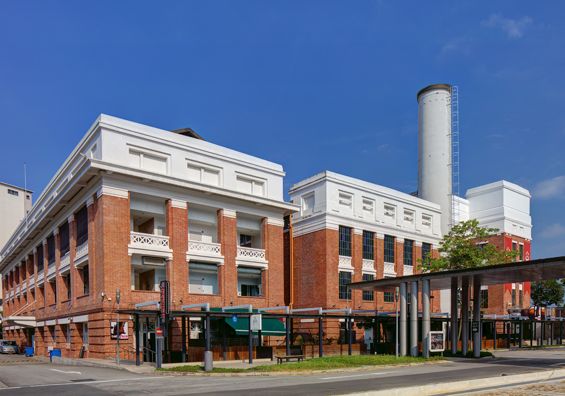|
Mr Lim is positive on business prospects as there is government support for heritage preservation, with over 7,000 conservation buildings and over 70 national monuments in Singapore. |
Mr Lim, the driving force behind LCC, brings a remarkable personal journey to the company’s story.
Originally from Malaysia, Mr Lim moved to Singapore to pursue higher education, earning his Bachelor of Engineering (Civil) from the National University of Singapore,starting his career with a modest S$900 monthly salary, he recalls during an investor briefing.
Despite challenges like Covid-19 pandemic, he transformed the fledgling entity into a specialist in conservation, restoration, and interior works.
Now, with over 35 years of experience in the building industry, Mr Lim’s leadership is rooted in both technical expertise and an appreciation for craftsmanship.
The founder’s management approach is rooted in treating employees like family and fostering a deep sense of ownership.
"I treat all my staff like family," he emphasizes, crediting this for LCC's low turnover.
Even rank-and-file workers, including Bangladeshi, Filipinos and Myanmar artisans, got opportunities to apply for shares in the IPO.
Regular Saturday sessions over prata breakfasts are held where staff can discuss not only work but also personal and family matters, reinforcing the company’s familial culture.
The company takes workers on tours and awards watches for long service.
LCC specializes in complex projects that combine conservation, addition and alteration (A&A), and interior design.
The company’s portfolio includes high-profile projects such as the restoration of the National Museum, heritage shop houses on Club Street, and the transformation of the iconic Oriental Plaza.  LCC carried out conservation and restoration, interior fit-out and A&A works at St James Power Station, which has been transformed from a coal-fired power plant to one of Singapore’s top entertainment centres. The site was awarded the URA Architectural Heritage Award for Conservation & Innovation - Distinction.
LCC carried out conservation and restoration, interior fit-out and A&A works at St James Power Station, which has been transformed from a coal-fired power plant to one of Singapore’s top entertainment centres. The site was awarded the URA Architectural Heritage Award for Conservation & Innovation - Distinction.
Unlike traditional contractors, LCC operates with a lean, highly skilled workforce—about 40 core artisans, supplemented by additional labor as needed.
The company’s asset-light model and reliance on in-house expertise allow it to maintain high margins and deliver quality work on time.
Projects typically last between 7 to 15 months, reducing exposure to long-term risks and fluctuations in material costs.
LCC’s growth trajectory has been impressive.
Despite the challenges posed by the COVID-19 pandemic, the company rebounded strongly, with revenue and profit figures for 2024 and 2025 showing significant strength.
The (end-May 2025) order book stood at $123 million, covering projects for the next two years.
The company is now eyeing regional expansion, particularly in Malaysia and Indonesia, and is considering mergers and acquisitions to complement its core business.
| Annualised historical PE |
| The 1HFY25 net profit of $5.5 m already matches the $5.6 m full-year FY24 figure. On an annualised basis, FY25 profit represents a PE of 7.2 based on the IPO stock price of 25 cents and market cap of $78.8 million. The company is confident of profit growth in FY26. |
LCC is actively looking to enter the Good Class Bungalow segment in Singapore, where project values can range from $5 million to $10 million and margins are better.
The IPO on the Catalist board marks a new chapter for LCC which received $7 million, with proceeds earmarked for regional expansion, investment in complementary businesses, and working capital.
LCC has a dividend policy of distributing at least 30% of profits for FY25 and FY26.
While LCC’s prospects are strong, several risks could impact its future performance: • Rising Competition from Foreign Entrants: Singapore’s construction and fit-out sector is highly open to foreign participation. Mr Lim notes that only a handful of Chinese and overseas players are currently active, but more may enter. • Cost Pressures and Labor Shortages: The industry faces rising construction costs, labor shortages, and supply chain volatility. • Project and Execution Risks: Conservation and restoration projects are inherently complex, requiring specialized skills and careful project management. |
Lum Chang Creations' IPO Prospectus is here.







